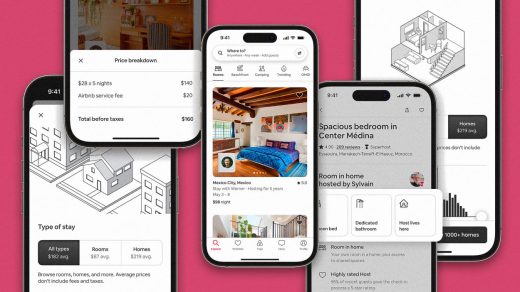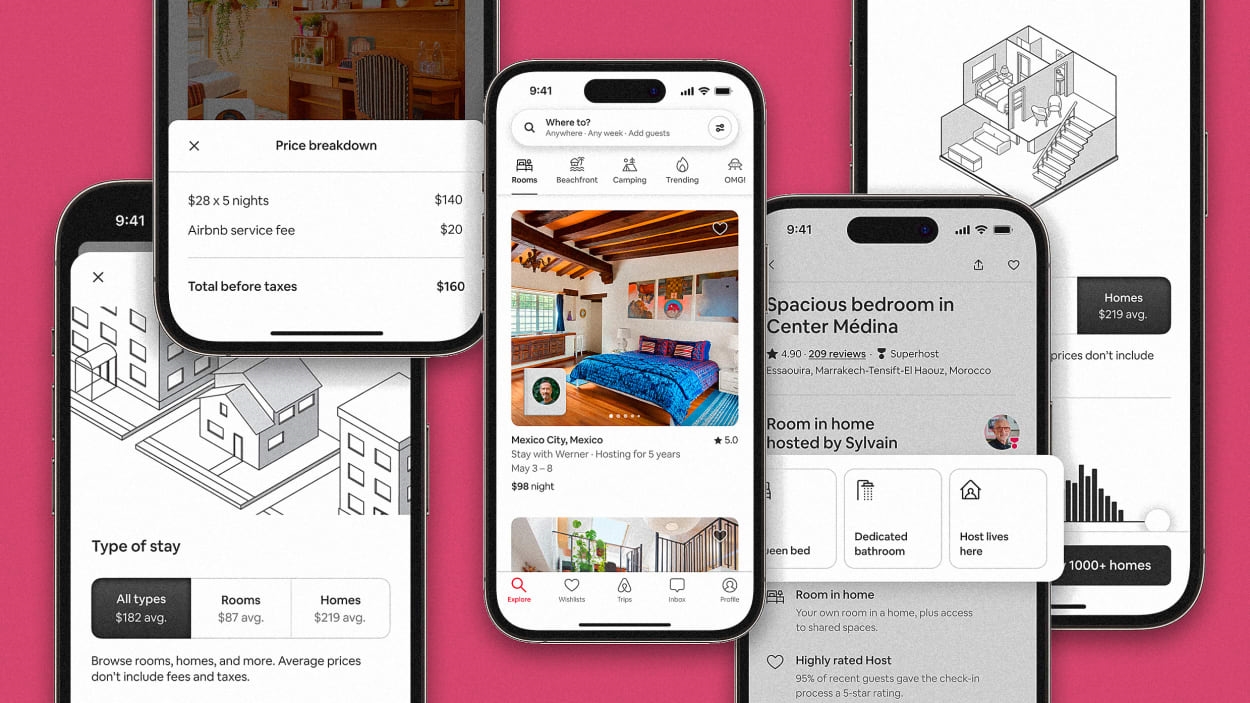At. Freaking. Last. Airbnb is fixing its core design problems, says CEO Brian Chesky
We’ve all been there.
You find the perfect Airbnb for the weekend. It’s surprisingly affordable. And when you go to checkout, you realize there’s another $200 tacked on for cleaning fees. Or maybe when you look at the host profile, you’re suddenly not so sure if this person is even real. Or maybe after you actually stay and go to check out, you realize that you’re racing for the airport and have no clue what to do with the keys.
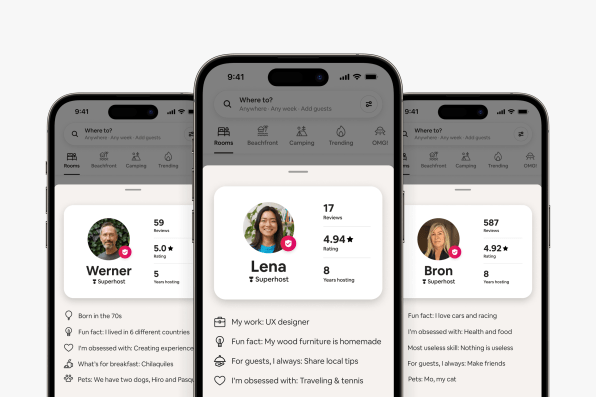
These are some of the core issues with the Airbnb experience, and despite the fact that the company was founded by designers, they’ve gone unaddressed since the company was founded in 2007. That is, until today. With Airbnb’s summer update, it’s introducing more than 50 small improvements for renters and hosts that are meant to solve the most sticky, lingering pain points of using Airbnb.
“The key point is we’re listening. I’ve listened,” says Brian Chesky, Airbnb’s CEO, after he shows me half a dozen tweets where the public absolutely dunked on both him and his platform. “And, you know, I ultimately want our product to be something that people deeply love.”
The new features arrive as Wall Street has mounted pressure on Airbnb, not for its bookings or revenue (its Q4 2022 revenue and profitability was its highest in history), but due to these increasingly vocal complaints across social media. Many of complaints were compiled in a particularly damaging report from The Bear Cave substack earlier this year that outlined the one-two punch of Airbnb’s oft-outrageous pricing and horror stories like encountering hidden cameras. This at a time when a resurgence from large scale property management companies threaten Airbnb’s core business.
Leading into the latest redesign, Chesky says his team read 15,000 social media posts, analyzed tens of millions of customer service complaints, and held conversational workshops for thousands of guests and hosts. “From all this work, we were basically able to identify a hit list, like, a top top list of complaints for each step of the journey for guests and hosts,” says Chesky.
The welcome list of upgrades
Perhaps the largest upgrade is in transparent pricing. Before the update, Airbnb added cleaning fees and taxes onto the price only when you arrived at your final checkout screen—the style of sticker shock we all know too well from Ticketmaster. Now, when you use Airbnb, the nightly prices reflected on the map will include any and all fees rolled in, so that the nightly rate is the real rate.
In this setup, cleaning fees disappear entirely. (A host can still add them, but they’re simply averaged into the cost.) “It’s just like a hotel,” says Chesky. “In a hotel there is no cleaning fee.”
The lack of this separate fee means that hosts can’t game a system with a cheap listing and an exorbitant cleaning fee. But as Chesky explains, it works out better for hosts, too. Guests don’t react well to the fee—especially when many hosts still expect guests to clean up after themselves.
This mismatch of expectations is a general challenge that cuts across experiences on Airbnb’s platform. As a mediator, it’s Airbnb’s job to navigate and facilitate compromise. Cleanup itself is a topic that Chesky says became particularly salient during COVID-19, as guests and hosts were both more anxious around best practices. As for how Airbnb addressed it: Now the app will include a simple page with instructions for checking out, which can include, for example, a request to take out the garbage and guidance around where to leave the key.
The checkout screen is not exactly cutting–edge design theory. Nor is Airbnb’s new pricing tool for hosts, which allows them to see the cost of similar listings, and the actual number they charge guests, more clearly. Nor is the new search map that lets you set a pin so that you don’t lose your bearings looking at where to rent. Nor is the indicator that tells you if an individually rented room has a lock on the door. Nor is a new profile page that gives some semblance of indication that your host isn’t a bot. These are straightforward design interventions, but the updates should be effective at fixing some of Airbnb’s lingering problems all the same.
What took Airbnb so long?
As an individual who has fallen in and out of love with Airbnb several times over the years as I’ve ping-ponged between dream and nightmare stays (fwiw, I’m back, baby! Love you Airbnb . . . for now!), I find myself both excited for these upgrades and frustrated that they didn’t come sooner. Airbnb designed its own san serif typeface, Cereal, five years before it made its pricing clear. (Cereal is an excellent typeface! But still.)
“Trust me, I was like, ‘why isn’t this stuff being fixed?’” says Chesky. “People sometimes will assume that the CEO doesn’t care. Sometimes the reality is, the CEO cares, but they’re not effective at making the change.”
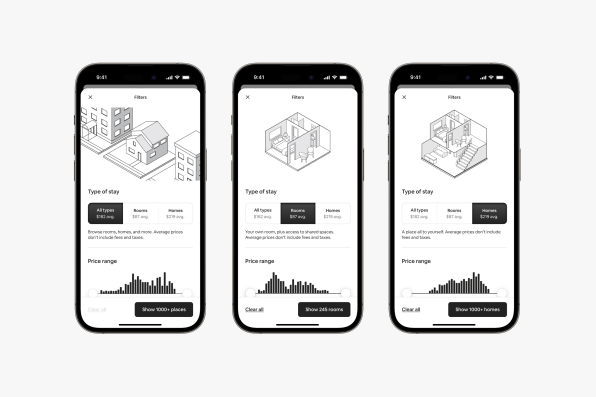
Why wasn’t Airbnb effective earlier? Chesky points to his own insecurity launching the company at 26, and bringing in industry mainstay management to help his company scale. While Airbnb certainly scaled (it’ll have more than 300 million users this year), he notes that the company went from a relatively flat structure that worked toward a few unified goals, to an endless array of silos, in which developers reported to product managers, all of whom were chasing their own metrics of success.
“I think, honestly, people were probably more focused on the typical classic Silicon Valley narrow problems, small teams doing small, different experiments, A/B testing the experiments doing a lot of localized work. So we weren’t a cohesive organization,” says Chesky. Following the pandemic, when Airbnb lost 80% of its business in just weeks, it laid off 1,900 people, and reorganized itself less like a siloed Google and more like the distinctly focused Apple of the 2000s.
“We put the entire company on a single roadmap. And we said, we’re going to just start focusing on fixing user problems,” says Chesky. “And so we’ve been doing that. There’s just been a lot of [design] debt, like any really big company.” (Case in point, even simple user interface changes to something like a pricing page at Airbnb can now necessitate updates to one of 70 different user policies, each that can be 100 pages long, and each that require localization across 220 countries.) Airbnb has grown into a truly complex business.
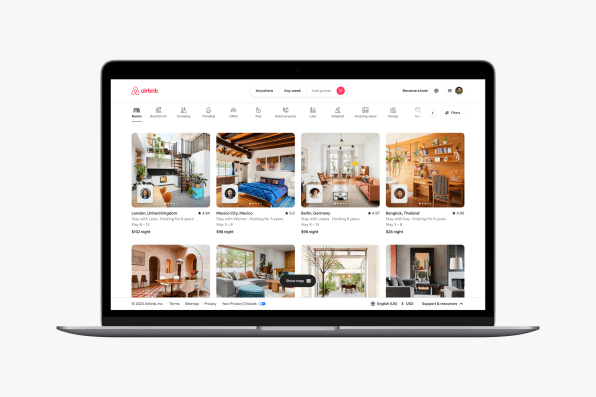
The remainder of 2023 is all about shoring up Airbnb’s core product, and as part of that, the plan also includes a doubling down on Airbnb’s original premise: renting individual rooms, which Chesky imagines will be especially tempting to a cash-strapped, adventure-ready Gen Z. By the end of this year, following more updates in September and November, Chesky promises to have all of the core user complaints addressed so that it can properly invest in its future.
“I have some ideas we’re working on that I think will be as big as the original business of Airbnb, and we want to go beyond the core business,” says Chesky, as he loosely teases the possibilities of AI. “We think we’re ready for our second act. But before we do that, you know, people don’t want to root for your next thing if they don’t love the current thing you do.”
(15)

